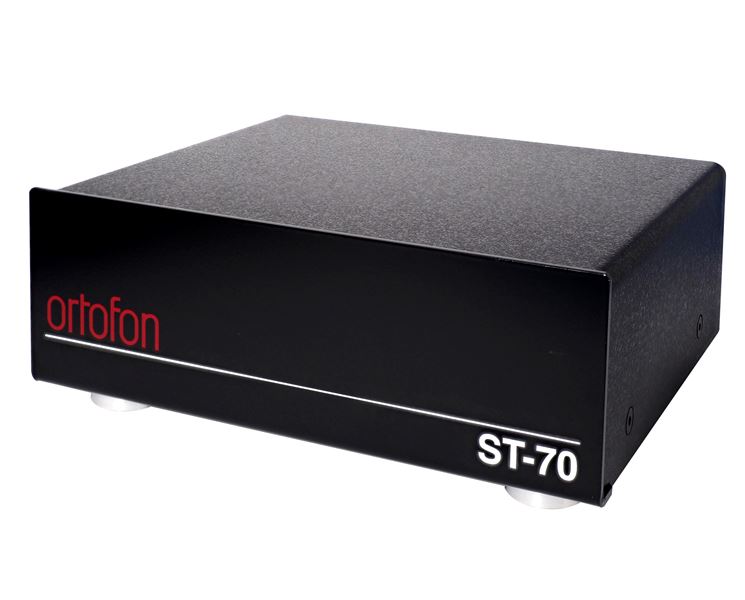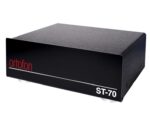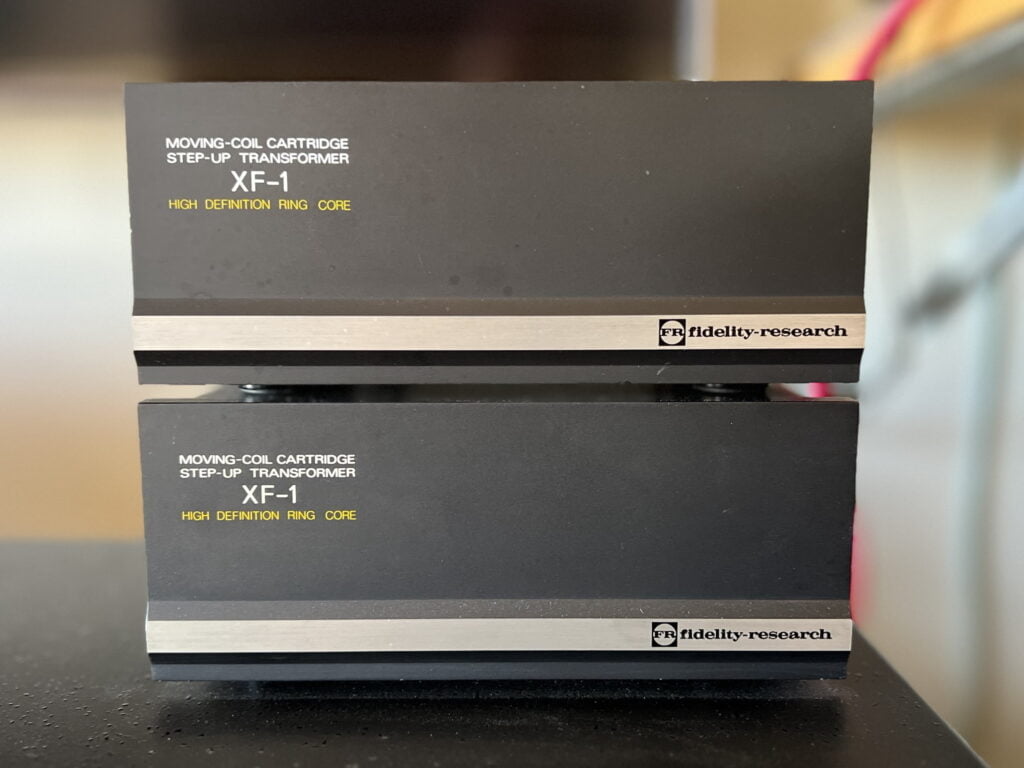If you want to extract the very best from your moving coil cartridge, a good step-up transformer, like the beautiful Ortofon ST-70, is an excellent option.
You may have read me raving on about just how much I love my golden age Fidelity Research XF-1 step-up transformers and what they do for the sound of a good vinyl system. Well, the Ortofon ST-70, whilst not quite at that level, is a very good option for those wanting to take their vinyl rigs to the next level with a really good transformer.
This article is about the Ortofon ST-70, this one in particular, which I supplied, through Ortofon, for my customer, about step-up transformers or SUTs in general and why you should choose one. Let’s go.
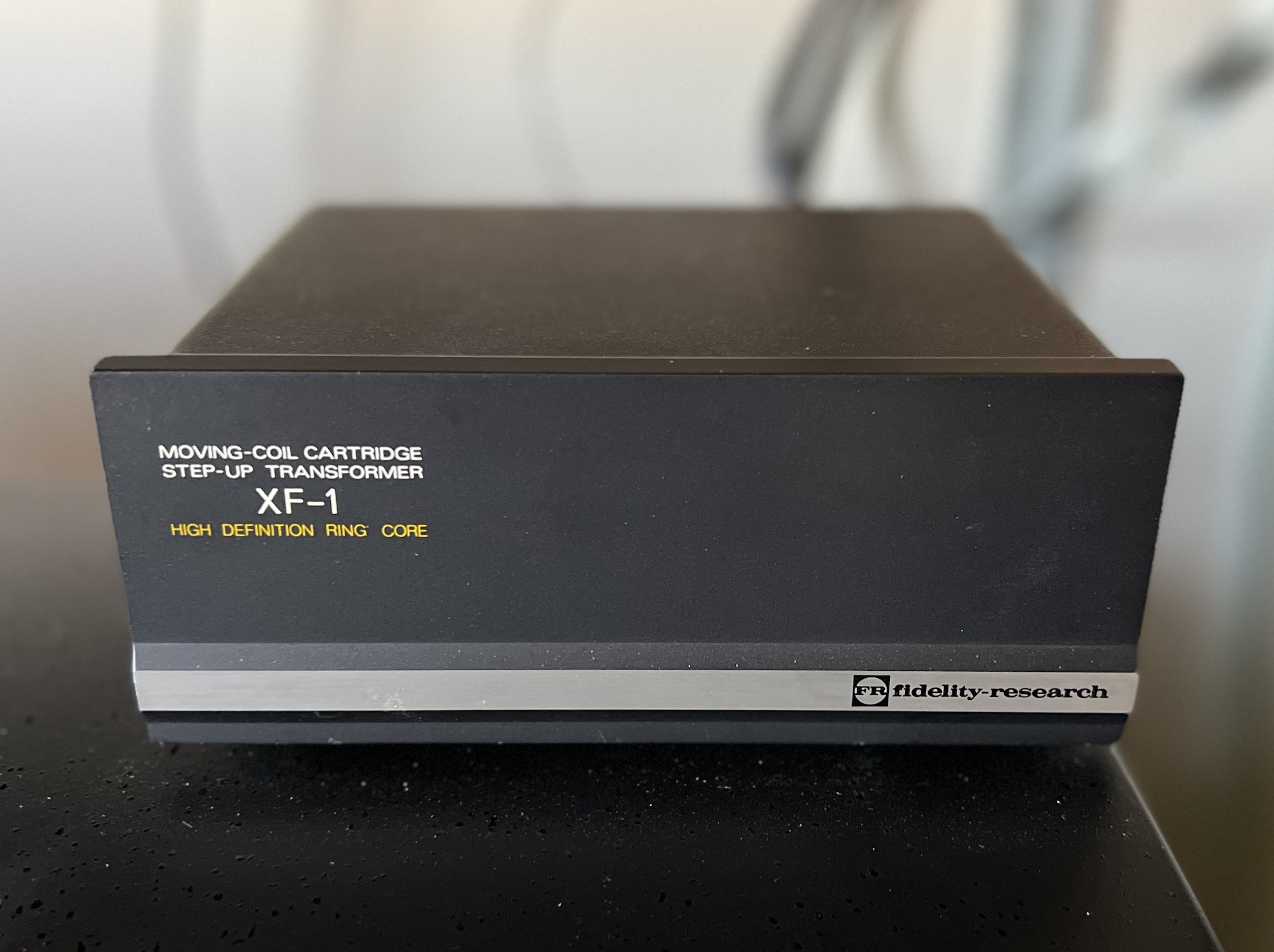
Why a Step-Up Transformer?
I’ve written an FAQ about this and my review of the Fidelity Research XF-1 from back in 2015. Transformers are a little bit of audio magic from the golden era that can take your vinyl playback to the next level, given the right starting points. Old technology, maximum performance, like vinyl. Let me explain.
Transformers ‘transform’ AC voltages, from low to high and vice versa. You need to transform the voltage from a moving coil cartridge because it is so incredibly tiny, sometimes below 0.2mV. Such small signals must be amplified hundreds of times before being sent to an amplifier, and this needs to be done with extraordinary precision, hence the high cost of really good phono preamplifiers.
The tiny output signals from moving coil cartridges can be amplified by conventional means with active electronics. Alternatively, part of that job can be handled by a transformer. The advantages of using a transformer are that they are essentially noiseless, passive devices, adding no hash, hum or hiss of their own. Nor do they add any colouration, being essentially just long coils of wire wound onto metal cores. The disadvantages are none other than the expense involved in making good ones.
This signal boosting can be done entirely with active electronics, but it takes very, very good active electronics to even come close to the level of transparency and low noise achievable with a good transformer. And by very, very good, we mean very, very expensive. So don’t expect your Cambridge Audio or Rega phono preamplifier to be in the same sonic universe as a transformer; it’s simply not possible.
It’s best to hand some of the heavy lifting over to a transformer, and for this reason, many of the very best moving coil-based vinyl playback systems, and some of the best hi-fi equipment, use transformers. For an MC playback system, you’ll need the transformer and a really good MM phono preamp to partner it with. Both are expensive, so transformers are less common and generally reserved for use in better systems.
Features
The Ortofon ST-70 sits just above the middle of Ortofon’s range of step-up transformers, and with an RRP of around $1799 AUD, it’s not cheap. But, when you compare what this can deliver in terms of added realism, midrange magic and micro-resolution across the spectrum, a step-up transformer like this is a no-brainer if you can afford one.
The Ortofon ST-70 is built with the right ingredients, including a pair of Swedish Lundahl transformers in mu-metal shielded boxes. This is a good way to do it and leads to low noise and excellent isolation. The ST-70 also features switchable taps to allow for two cartridge impedance ranges: a ‘medium’ range of 5 – 50 Ohms and a ‘low’ impedance <10 Ohm setting. This adjustability makes the Ortofon ST-70 a versatile moving coil transformer, certainly more so than the XF-1, for example, where you have to buy the XF-1L, XF-1M or XF-1H, depending on what you need.
That being said, there is no actual magic here, and these wide impedance match ranges are ‘suggestions’. Medium impedance would not ordinarily take in a range from 5 – 50 Ohms, and they likely specified this so that owners of Denon DL-103 carts with their 40 Ohm impedances were catered for. Ideally, this transformer would be used in low impedance configuration B, with carts rated at 5 – 10 Ohms.
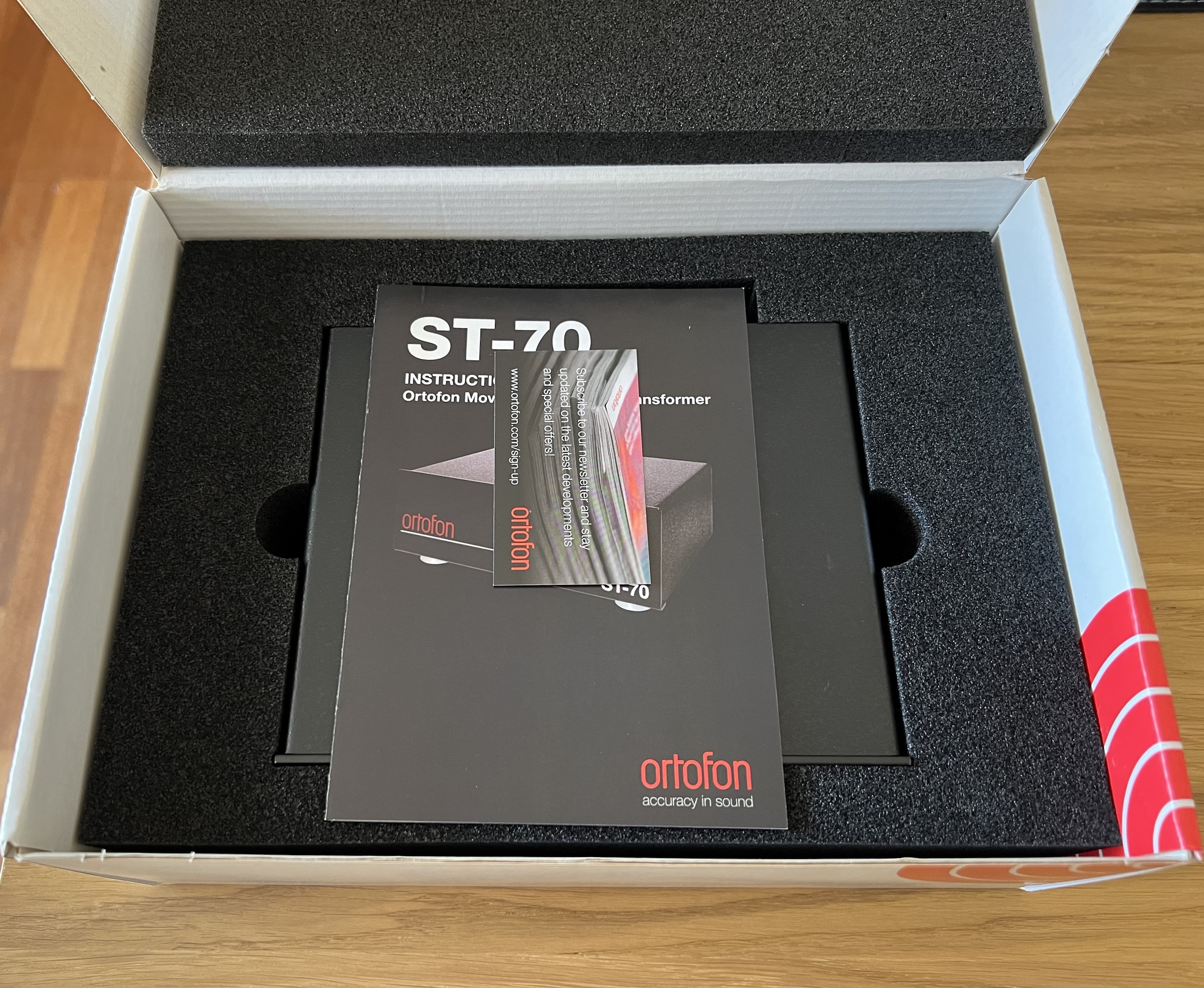
Ortofon ST-70 Specifications
Configuration A:
Recommended cartridge impedance 5-50 Ω
Gain 24 dB at 1 kHz
Frequency response 10 Hz – 100 kHz ± 1 dB
Recommended load 47 KΩ // 200 pF
Configuration B:
Recommended cartridge impedance < 10 Ω
Gain 30 dB at 1 kHz
Frequency response 10 Hz – 80 kHz ± 1 dB
Recommended load 47 kΩ / 200 pF
Dimensions and weight
Dimensions: 58 mm(W) x 135 mm(H) x 150 mm(D)
Weight: 1.233 kg
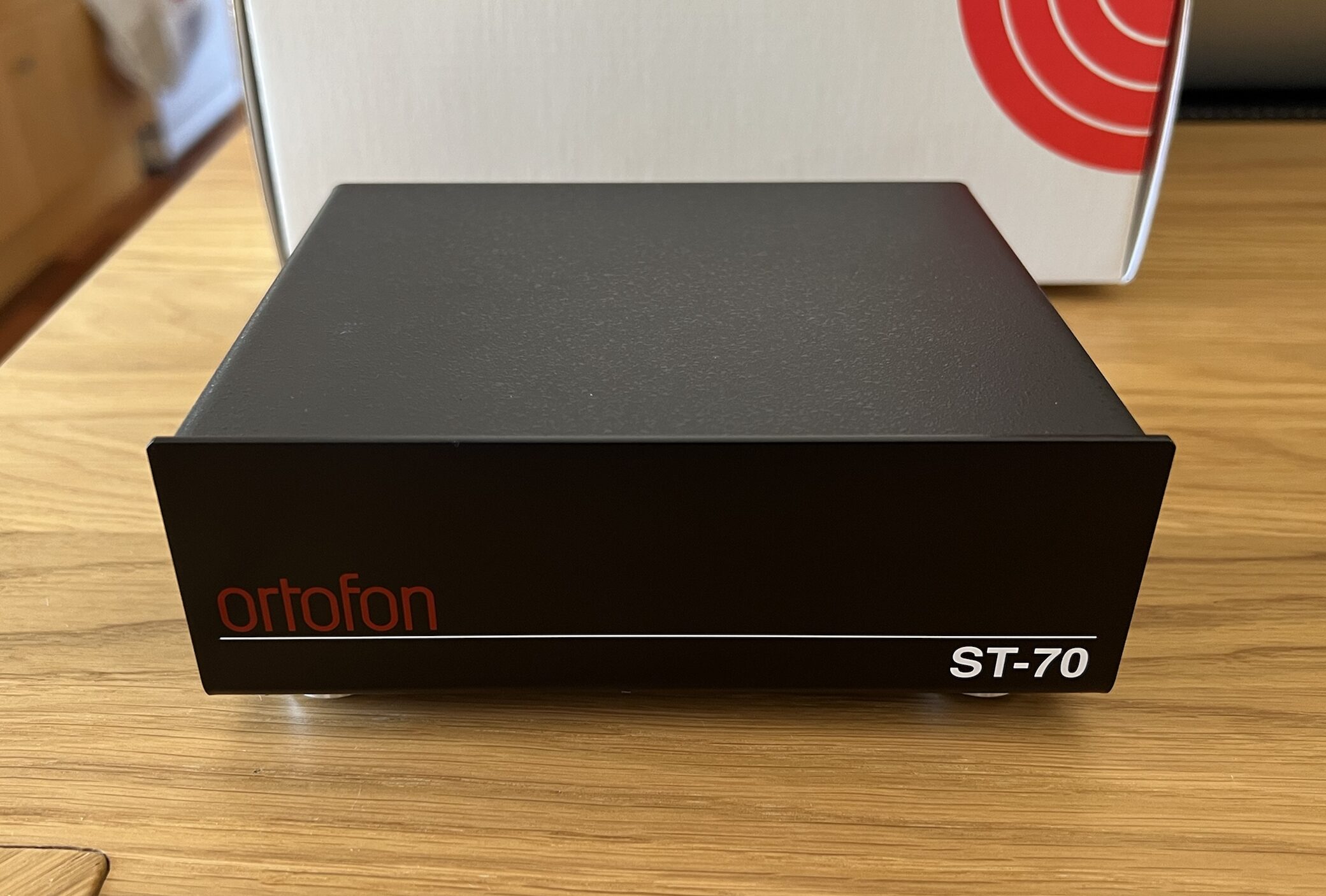
Pros
I’m not a retailer, and I’m not selling SUTs. I’m not sponsored by Ortofon, and I have no advertisers, so it doesn’t bother me if you use one or not. But I do love helping people get the most from their systems, especially their vinyl. So, why use an SUT?
That’s easy, there are only gains to be had: better realism, micro-dynamics, fluidity, lower noise, wider frequency response, no parts to wear out and on it goes. Once you’ve heard a decent SUT in a good system, you’ll understand what they do. Just don’t connect one to a puny NAD or Cambridge Audio phono pre and think you’ll hear all of what they can do. You need good equipment to pair with these.
The added punch, reduced noise and ‘glare’, extra ‘in-the-roomness’ and liquid-smooth texture that you can only get with a SUT make them the MC phono preamplifier of choice for discerning listeners. The problem is that they just aren’t a part of mainstream vinyl-dom these days, so most people know almost nothing about them!
The only way to improve is either with a better SUT, or an extraordinarily good active MC phono preamp, like my Accuphase AD-290. Hi-fi retailers with shelves filled with active gain stages are going to tell you something very different, of course. Mind you, they don’t have an Ortofon ST-70 to sell you, and they can’t supply you with one either because they don’t keep stock, so there’s that. *
Heck, I bet nobody in the store has ever even seen one. I custom-ordered this one from Ortofon Australia. There were none in the country; it took three months to arrive and was a ‘special import’ item.
* Amusingly, this is despite several Australian online retailers continuing to advertise that they have ST-70s in stock and available for shipment. They do not!
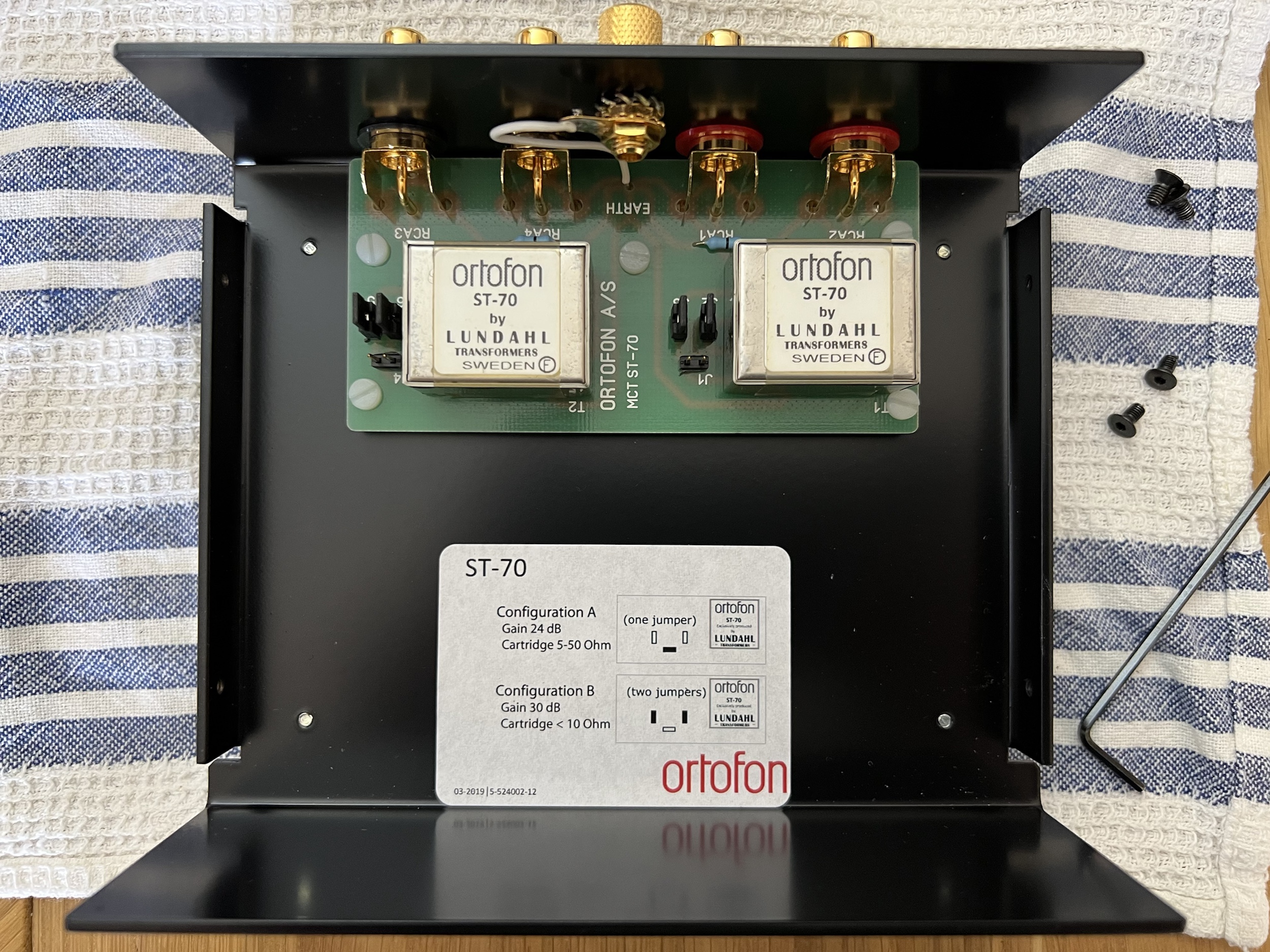
Cons
Cost is the most obvious con. An SUT only replaces a moving coil gain stage. As mentioned, you’ll still need a good moving magnet phono preamp to partner with any SUT, and this puts many people off, understandably so. Most people don’t like the idea of spending a few hundred dollars on an active gain stage, so nearly $2000 on a transformer and another couple on a good MM phono preamp puts most people WAY beyond where they want to be. An SUT isn’t an entry-level, background music purchase.
Another issue is a lack of access to good advice about transformers. Transformers have to be well-matched to their cartridges, and most have little understanding of step-up transformers or cartridge-transformer matching. Most have never even seen a SUT, as I mentioned, let alone used or owned one. Ask many retailers about transformers or transformer-cartridge matching, and they’ll likely look at you with a puzzled expression and wander off. This is a problem.
A classic example comes from the very customer I supplied this Ortofon ST-70 to. He asked a couple of retailers who said they stocked the ST-70 about the advantages of transformers and why someone would choose one and was met with basically a wall of silence and lack of knowledge. Not only did these retailers not actually stock it, but he was given technically incorrect information. This is the current reality, even with the great vinyl resurgence.
We are still actually a long way from the golden era, and many are just getting into vinyl, with little experience using equipment like transformers. My customer and I had several productive pre-purchase conversations. I answered a lot of questions and even loaned him one of my own transformers to try before he asked me to order this Ortofon ST-70 for him. Keep all this in mind when thinking about purchasing a transformer.
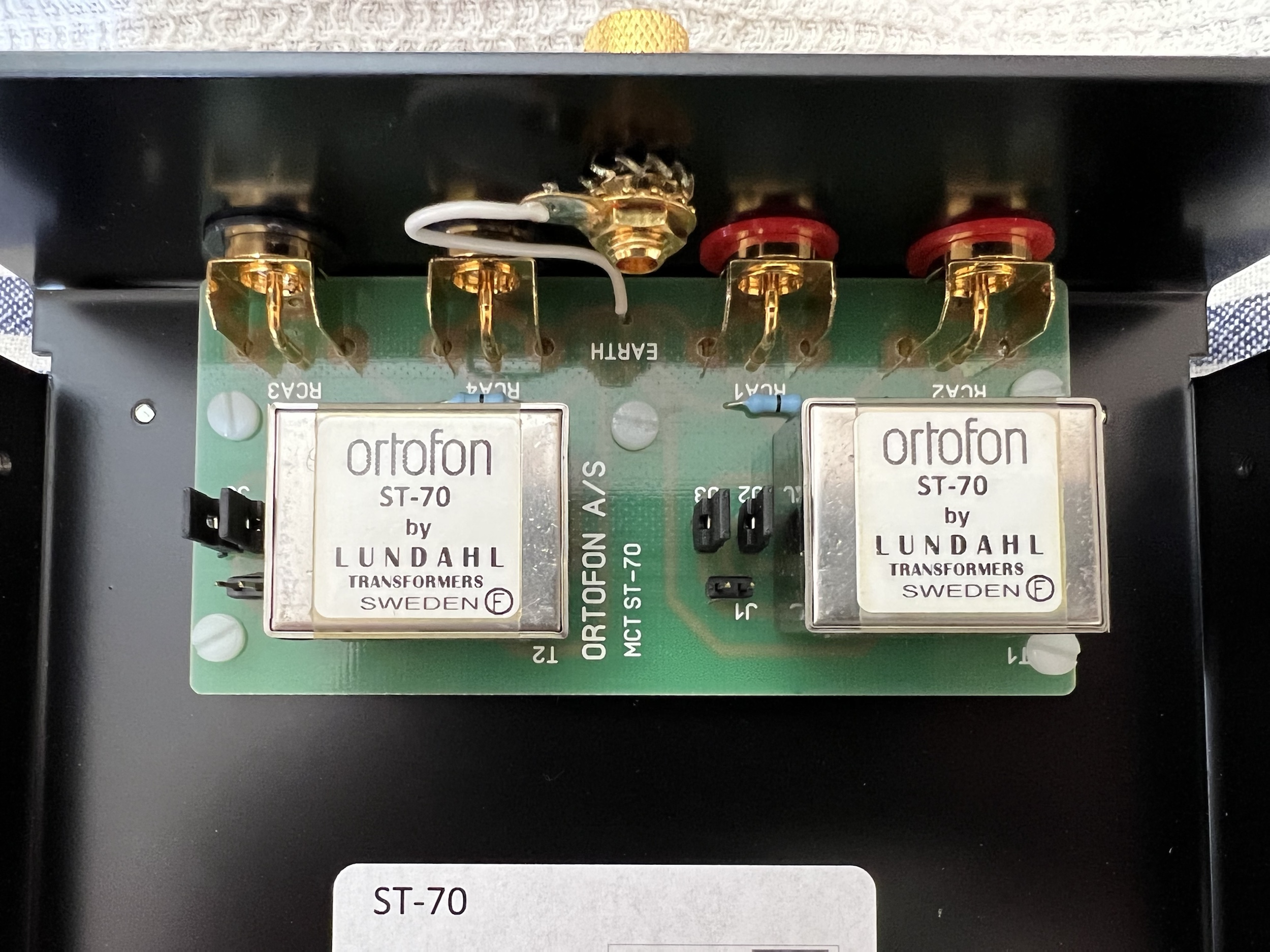
SUT Sound Quality
My apologies, but I haven’t listened to this Ortofon ST-70, so it’s not a full review in that sense, and I’ve not included a sound quality component for this reason. I supplied this new ST-70 to my customer David, and he probably wouldn’t have been happy with me plugging it in and using it before he did!
David tells me it sounds fantastic, though, better than the moving coil gain stage in his beautiful Accuphase E-600 class-A integrated amplifier and that the ST-70 improved his Ortofon Cadenza Red and every aspect of his vinyl playback. He also said that he wasn’t easily able to put the improvements into words. This is to be expected from someone who doesn’t write about audio, and it also describes the sorts of incremental improvements one can expect when adding a transformer like this to an already very good system.
Transformers add an elusive ‘magic’ to the sound that’s very difficult to obtain any other way. Many chase the magic with ever more expensive cartridges, but the amplification chain has to be right, and the fewer transistors, tubes, capacitors and power supplies there are in the way, the better. Transformers deliver this, partly because of excellent matching between the cartridge and the rest of the system.
The fact that the Ortofon ST-70 improved a $15k Accuphase integrated amplifier tells us something about what a good transformer can do for an already excellent system.
Alternatives
There are alternatives to transformers. Some very good, fully active phono preamplifiers exist, but they are very expensive. My Accuphase AD-290, part of my C-290 preamplifier, is better, but it is orders of magnitude more expensive.
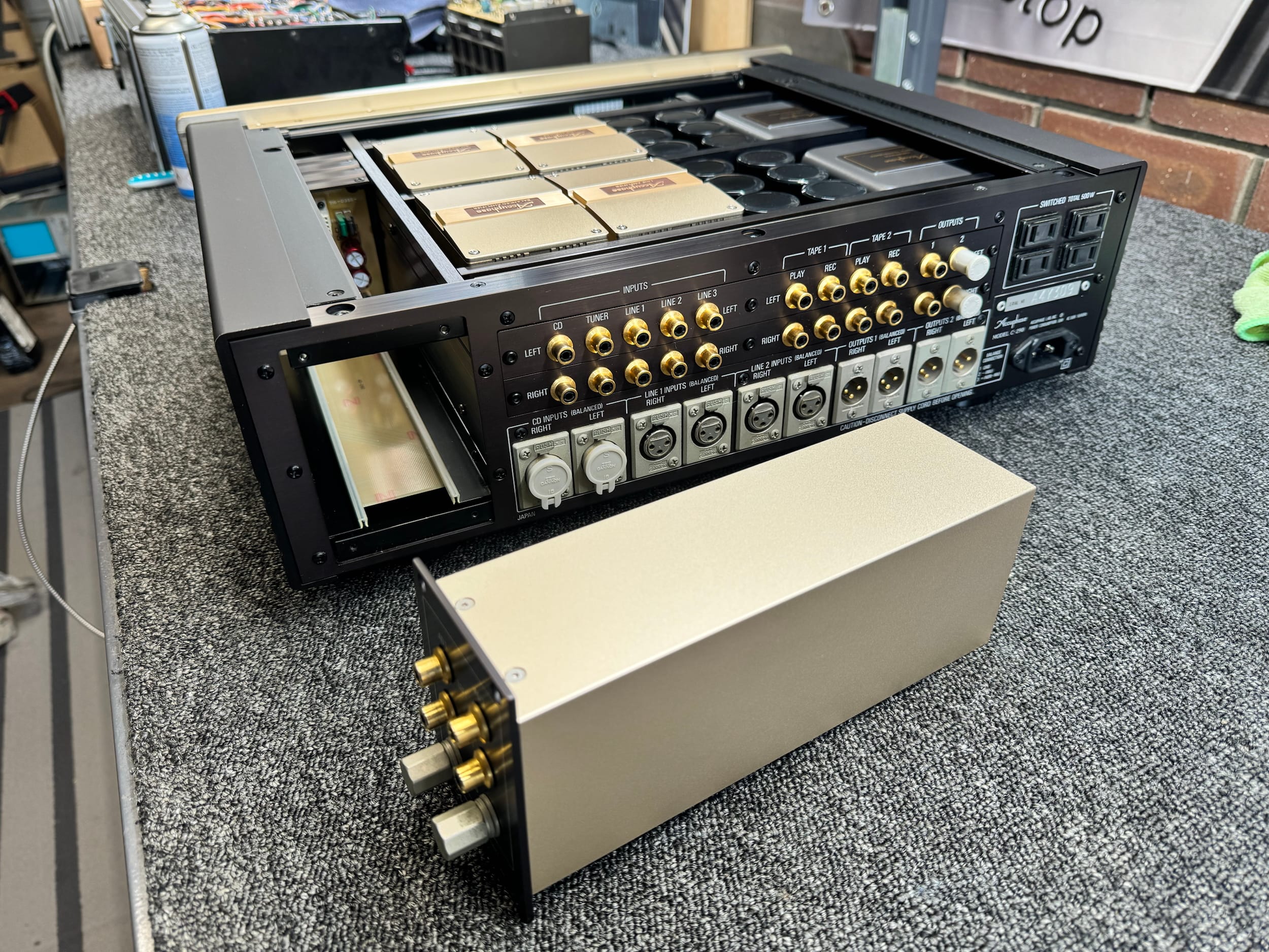
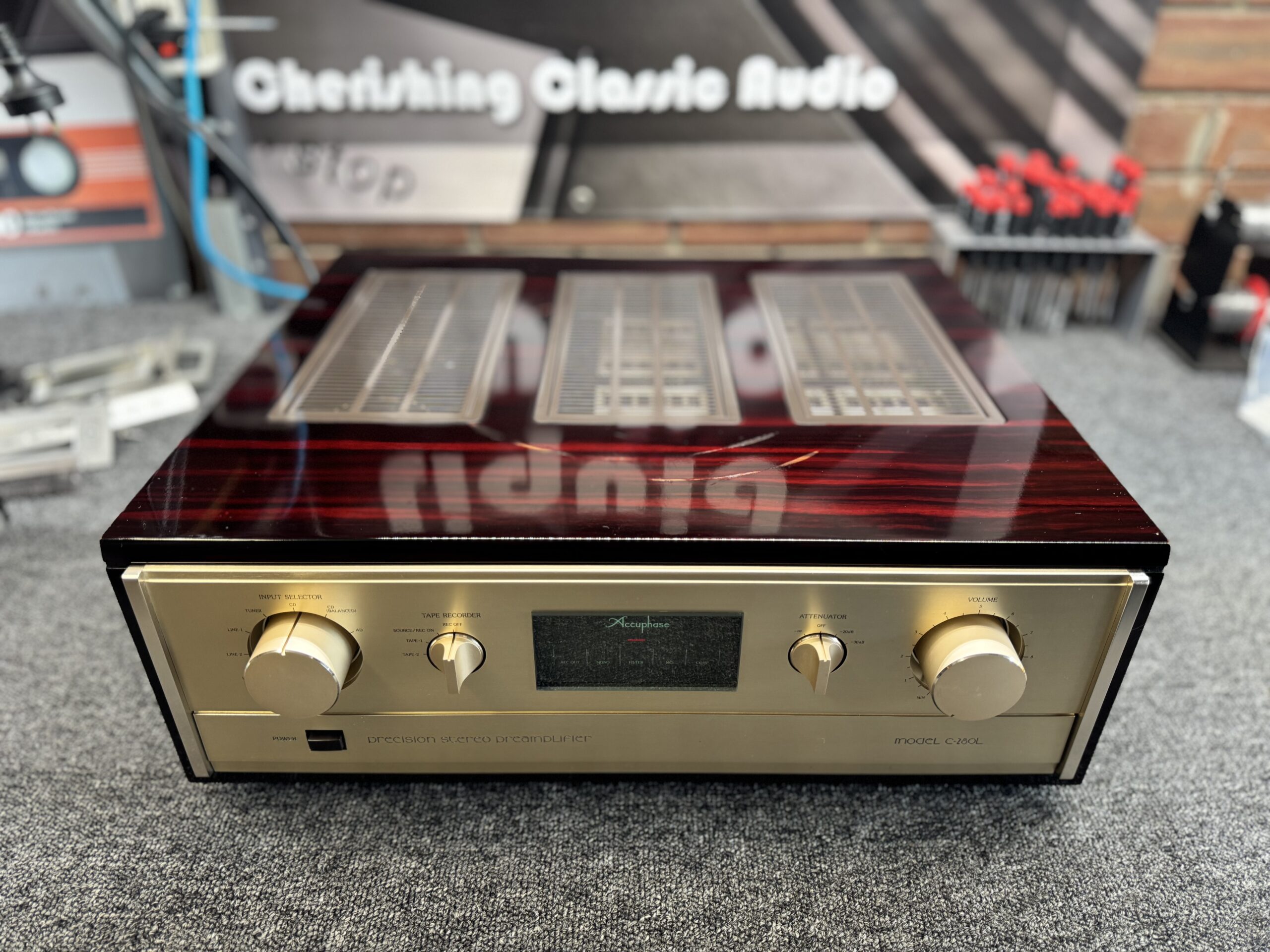
Many high-end phono preamps like my Cayin Phono 1 use transformers internally for the MC gain stage because it gives the best results. That should tell you something. Better SUTs can also be used with improved results. The FR XF-1 is certainly also better, and there are even better FR SUTs.
The Bottom Line
Transformers aren’t for everyone, so should you buy a SUT like this Ortofon ST-70? If you love vinyl and want to get the most out of it, if you own a $500+AUD low output MC cartridge with an impedance or DC resistance of 50 Ohms or less, ideally 10 Ohms or less, and want the very best from it, and if you can afford one, then absolutely yes.
You will need the best moving magnet phono preamp and ancillary equipment you can afford to go with it, though, so don’t go partnering the ST-70 with a cheap phono preamp or turntable. Most vinyl lovers will already own an MM preamp, so this is not a major deal.
A SUT like the ST-70, XF-1 or similar is a serious purchase and an investment not to be taken lightly. Get everything right, though, and you will enjoy what a SUT can do for a vinyl system.
Discover more from LiQUiD AUDiO
Subscribe to get the latest posts sent to your email.

